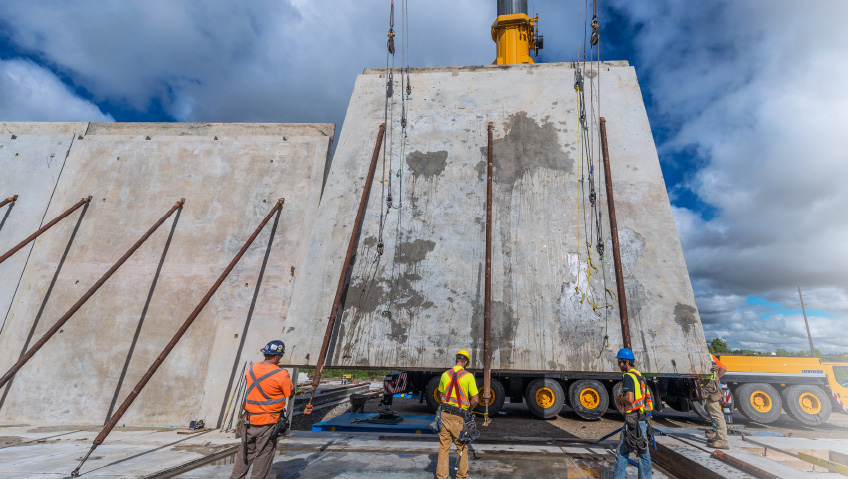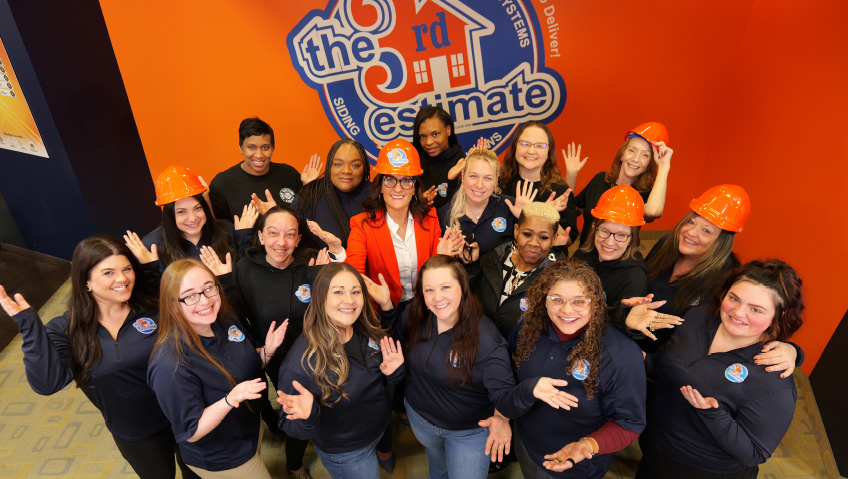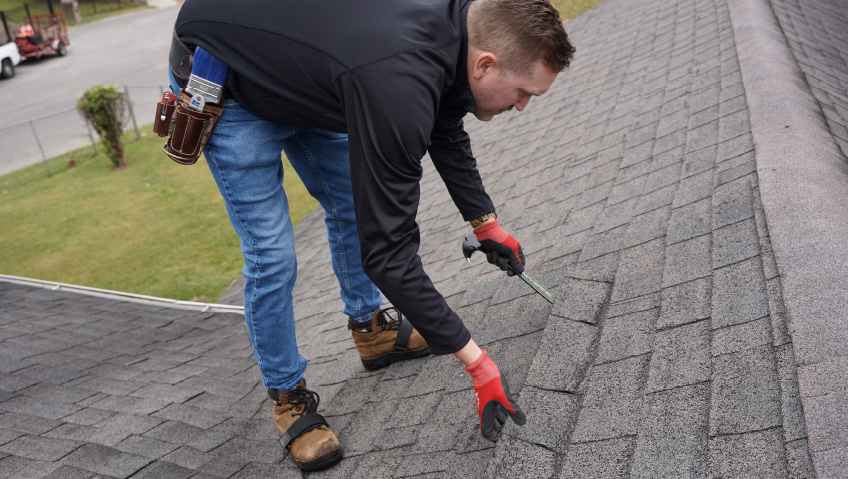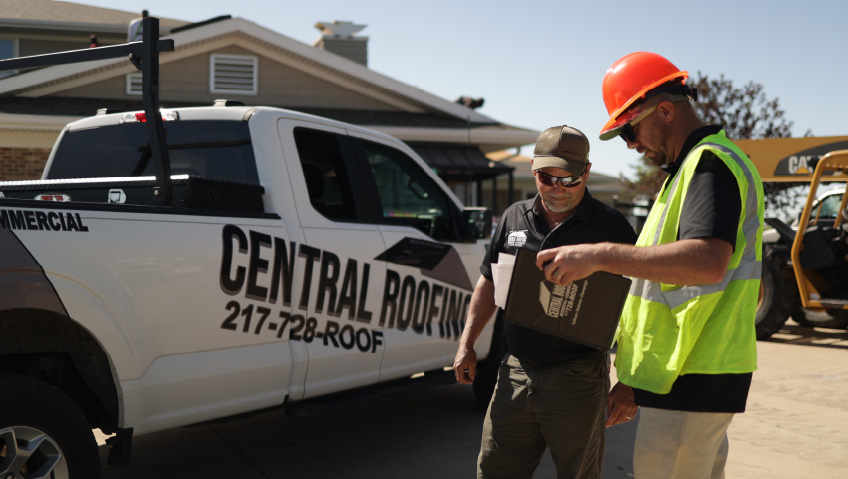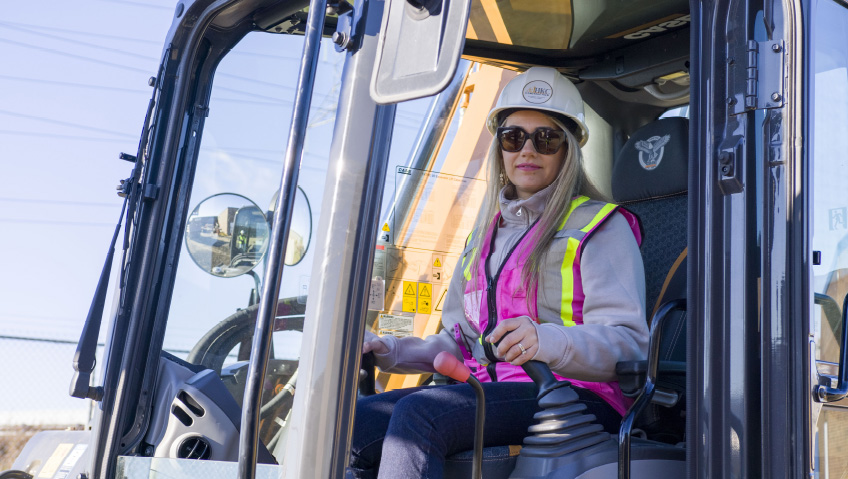Since 1902, Roman Mosaic & Tile has been a leader in flooring, the result of a fabulous marriage of traditional craftsmanship with modern technology and artistic creation, winning the National Terrazzo & Mosaic Association’s Job of the Century award.
Very few companies have retained family ownership through four generations and 120 years, let alone while consistently polishing a reputation for quality craftsmanship, dependability, and excellence. But that is exactly what Roman Mosaic & Tile has done.
Founded in 1902 by Angelo Trevisan, and based in Westchester, PA, it now has offices in Manheim, PA, Linthicum, MD, and Boston, MA.
Recently we had the pleasure of speaking with founder Angelo Trevisan’s grandson, John Trevisan, former president, and with great-grandsons, President Mike Trevisan and Vice-President Kevin Trevisan, Mike’s first cousin.
From Friuli to Vanderbilt
Angelo Trevisan, John tells us, was born in the Friuli area of northern Italy, a noted training place for mosaic work, an art form perfected by the ancient Romans, in which colored glass pieces and stones are inlaid in a substrate, usually clay or cement, to create intricate designs.
By the time Angelo arrived in New York in 1896, along with his brother, he was a master mosaic mechanic and had perfected his trade working on buildings in Germany and other European countries. “They were valued employees,” John says, “and much in demand. As soon as they said they were mosaic mechanics, they were hired.”
There was plenty of work to be had – on terrazzo floors in museums, in the fabled Vanderbilt mansions in New York and Rhode Island that are now designated National Historic Sites, and on gold domes atop churches and state capitols. In 1902 they moved to Philadelphia and founded Roman Mosaic & Tile, with Angelo’s brother later forming a separate company on his own.
Angelo’s company prospered, and when the Pentagon was built in 1941-42, Roman Mosaic & Tile was invited, with an enormous crew, to complete all the terrazzo work over a period of 18 months. By then Angelo’s sons were active in the business, and John recalls how his father, Angelo John, known as John, “used to say that at age 27 he was in charge of running the Pentagon.”
Revolutionizing terrazzo
After completing the terrazzo work at the Pentagon, John Sr. was drafted and when he returned from the war, the company had to be rebuilt. “It was my father,” John told us, “who was instrumental in developing epoxy terrazzo in the 1960s, and that process has taken over the industry and really put our company ahead of everyone else.”
John calls his father an innovative thinker, who early on recognized the potential of the synthetic polymer resin adhesive that had been developed in Europe in the 1950’s and the impact it could have on his business.
Traditional terrazzo was made by mixing marble aggregate into cement, but it was labor intensive, requiring a highly skilled mechanic. It required at 2-1/2” deep recessed concrete slab, and weighed 25 pounds per square foot.
Instead, an epoxy mixture troweled down in a 3/8-inch layer on top of a concrete slab made for an easier process and offered a quicker ‘pour to grind’ installation time. Terrazzo could now be used on upper floors of buildings, and also offered additional aggregate options such as quartz, glass, granite, and mother of pearl.
Additional benefits of epoxy terrazzo, according to the National Terrazzo & Mosaic Association, are that when used with a flexible membrane as a specified extra over the concrete slab, it can absorb some horizontal concrete cracking, and that it does not use VOC’s (volatile organic compounds). Its non-porous surface also doesn’t support microbial growth or allow moisture to accumulate, resulting in a mold-free environment.
Another first for the industry occurred when Roman Mosaic & Tile began manufacturing an epoxy terrazzo precast cove base in 1969. The use of this precast cove base cut down many hours of installation time on the jobsite. In addition, the company was one of the first to perfect a dry grind method with a vacuum attachment as a way of speeding up the grinding process, and today almost all epoxy terrazzo is dry ground.
However, he adds, “The older Italians in the terrazzo business didn’t like epoxy and called it ‘terrazzo in a can’ and wanted nothing to do with it. But my father saw the future in it and it’s what separated us from the competition. A lot of them went out of business, but we emerged as the leaders and it put us ten years ahead.”
Epoxy terrazzo was found to be ideal for use in pharmaceutical laboratories, cafeterias, and hospitals where a microbe free environment is essential; while hospitals and airports in particular appreciate its smoothness, which reduces the clack-clacking of stretcher, trolley, and suitcase wheels over tiles.
This is not to say that there is no longer a market for tile, which Roman Mosaic & Tile provides regionally through the department led by Kevin, but instead of marble, porcelain tile is the material of choice and lends itself to updating and refreshing the walls of commercial establishment lobbies.
“We don’t go across the country with tile, but we do work nationally and even internationally with terrazzo,” Mike told us, indicating the project the company did for the Warner Lambert Pharmaceutical Laboratory in Ringaskiddy, Co. Cork, Ireland.
The art of terrazzo
Because of the customized blends the company mixes on site, the aesthetic potential to create major public artworks with epoxy terrazzo is “limitless”, Mike says, “and designers and artists push us.”
Creating a design, even a seemingly simple geometric border, involves a five to six step process. After the concrete base has been prepped, divider strips, either white metal or brass, are inserted, according to the designer or artist’s instructions. Then depending on how many colors are involved, a different color has to be poured each day, followed by coarse grinding, fine grinding, polishing, and sealing.
In 1993 Roman Mosaic & Tile collaborated with contemporary Californian artist Alexis Smith to execute her vision of a map of the world centered on the Pacific Rim, along with 20 medallions representing various Pacific Rim cultures. The spectacular artwork covered the entire floor of the main lobby of the Los Angeles Convention Center with inlaid terrazzo.
A few years later, Smith received a commission to design six floor-scapes for the Schottenstein Center at Ohio State University, featuring star alumni athletes, including All-American John Havlicek, who played for the Boston Celtics, the 1916 Women’s Basketball Club, Averill Roberts who helped take the women’s team to the 1993 Final Four, hockey player Benji Wolke (1998) and the 1890 baseball team, featuring Fred Taylor who played first base for the Buckeyes.
After seeing her “Pacific Rim” vision come to life through terrazzo, John says Smith really understood the process, John says, and “one day I got a call from her, out of the blue, saying ‘I have a job for you at Ohio State. It’s going to challenge you and I’ll get you the job, but you have to send me Chuck, your foreman, the one I worked with in LA.”
Smith was right on the challenge. It was a huge undertaking to re-create her drawings, which when enlarged were several times larger than life. The basketball in Havlicek’s hand, for example, is 13-feet in diameter.
The job of the century
She was also right in her choice of company to do the job. It required 8,350 gallons of epoxy, and 115 tons of stones, mother-of-pearl, and glass chips prepared in custom shades. Over five miles of 1/16- inch zinc wire strips that had to be bent and placed by hand, around each of the areas drawn on the floor, so that the multiple gradations of shade could be kept separate.
Then the varicolored surface layers had to be troweled in with little putty knives, the work so precise that John could recognize the face of his foreman which Smith had drawn into the crowd in the bleachers. The final stages of the work involved grinding the surface down three to five times to bring out the color, before adding a diamond finish and sealer.
It was indeed a monumental and inspiring work and deservedly received the Job of the Century Award, bestowed upon it by the National Terrazzo & Mosaic Association (NTMA).
But as Roman Mosaic & Tile entered the 21st century, the company was not resting on the glories of its past and has continued to produce award-winning work at both regional and national levels, while facing what Mike says today is some stiff competition from other companies.
Another outstanding work that earned the company the Job of the Year award from NTMA in 2016, involved making Carnegie Mellon University art professor Clayton Merrill’s vision of “Seeing the Sky Beneath Our Feet” come to life on the 69,000 square foot floor of the Pittsburgh International Airport.
A hugely ambitious project, it depicts the sky, clouds, and flight paths, and around the perimeter, silhouettes of Pittsburgh landmarks such as Heinz Field and the PNC Park.
According to the company’s Facebook page, the project involved transferring Merrill’s design into a CAD file, and then programming a water jet cutting machine to produce 1,625 full-size templates, to be used as stencils to trace the design with orange paint onto the underlying membrane.
Then the design was outlined with 15,000 feet of thin zinc strips, bent by hand, and glued onto the orange lines, to keep the 13 different colors of the terrazzo separate as they were poured.
Adding to the complexity of the task, was the fact the site had to remain accessible to the public, and businesses there needed to remain open. With those restrictions in mind, the craftsmen worked at night, 8 pm to 5 am, and only on small areas at a time.
Generation of genius
Growing reflective, as he thinks about the history of the company and the thousands of projects completed in schools, universities, hospitals, office and retail complexes, airports and laboratories, and of its future, John pays tributes to the first two generations of Trevisans.
“It speaks for itself, for my grandfather to come over here and start a company that lasted for 120 years but I have to say the generation that did the most was my father’s. There was a ton of competition in Philly in those days, all Italians, and he separated himself and changed the industry by getting into epoxy ahead of the others.
“But it’s still a great industry, there are limitless design possibilities, and the work just keeps getting better and better.”


